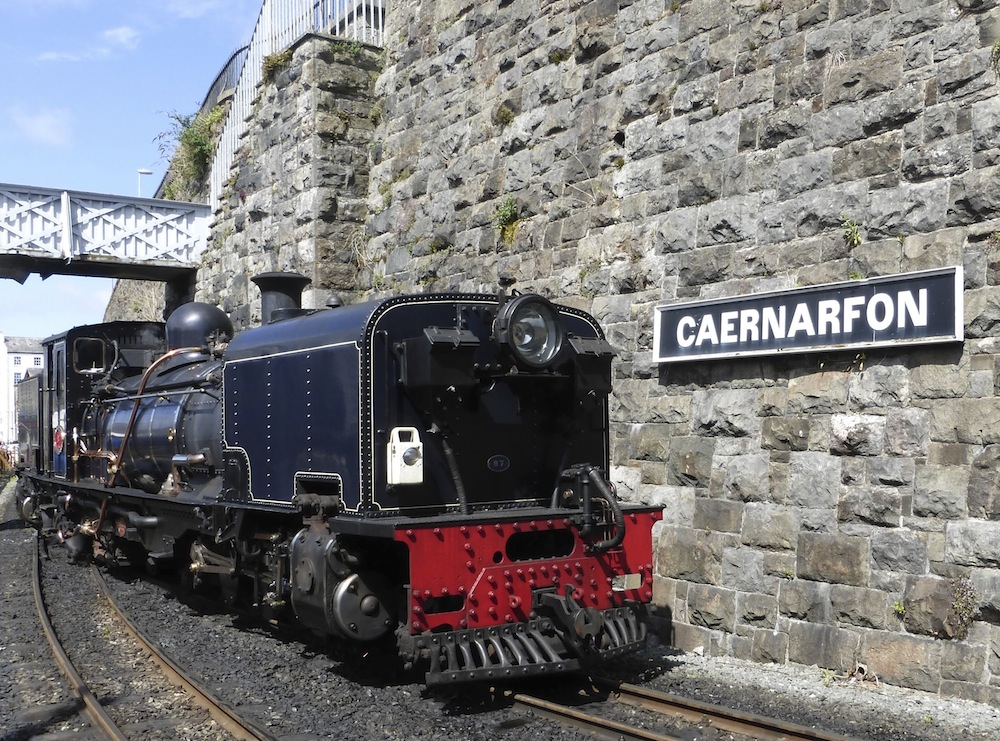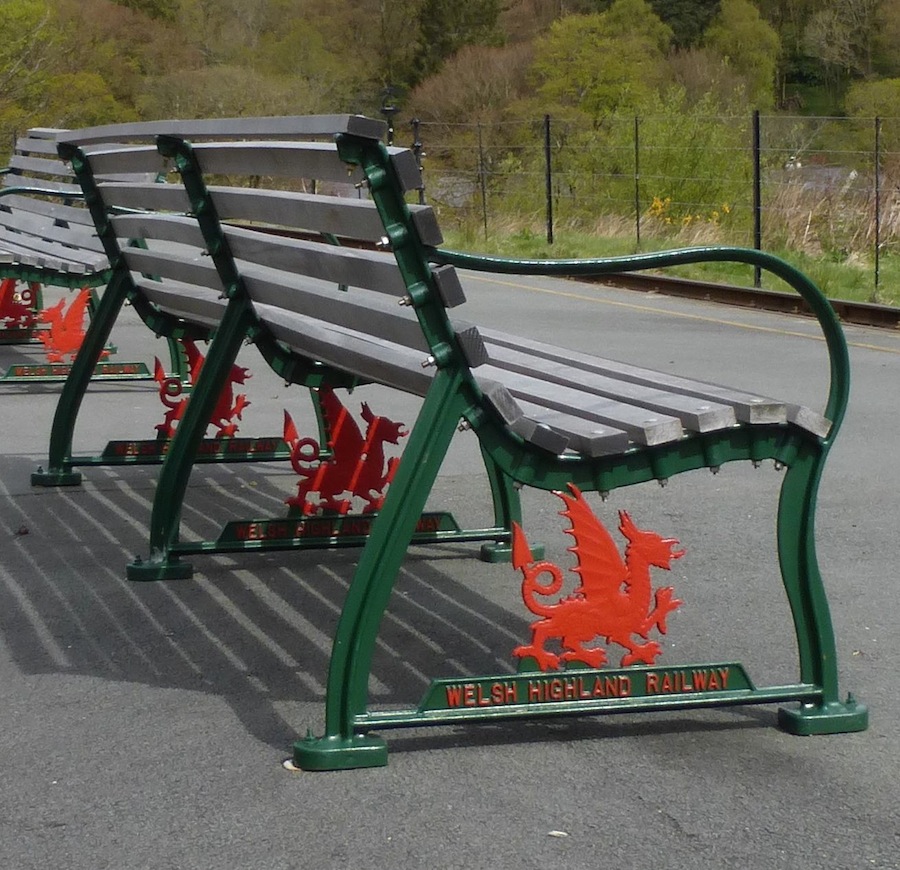Photographs by the present author: you may use them without prior permission for any scholarly or educational purpose as long as you (1) credit the photographer and (2) link your document to this URL in a web document or cite The Victorian Web in a print one. Click on the images to enlarge them.

Beyer-Garratt 138 locomotive on the Welsh Highland railway route between Porthmadog and Caernarfon. Notice the slate heaps to the left.
A train on the Welsh Highland Railway, connecting Porthmadog to Caernarfon in North Wales. At twenty-five miles in length, this is the longest of the heritage railways in Wales, and in fact, according to the information on its timetable, in the whole of the United Kingdom (Rheilffordd Eryri. It has a very complicated history. The original company was formed by linking the Croesor Tramway, which was officially opened in 1864; the North Wales Narrow Gauge Railways, incorporated in 1872; and the Portmadoc, Beddgelert and South Snowdon Railway, which started building its section in 1902 (see Beton). It finally started running a service in 1923, but even then had a troubled history, and in 1935 was rented out for a very nominal sum to the Ffestiniog Railway, a narrow gauge railway which had opened in 1836 (Simmons 349). This short-lived arrangement did not prove viable. It finally closed in 1937 (see Green 42).


Platform at Beddgelert. Note the red Welsh dragons, a symbol of the railway as well, on the cast-iron benches Easier to see at the bottom of this page).
Fortunately, that was not the end of the story. The railway reopened again with the backing of the restored Ffestiniog Railway, which by 1995 was confident that the line "could not only be profitable, it could provide environmentally-friendly transport for the communities between Caernarfon and Porthmadog" (Green 55).


Left: Locomotive 138 drawing into the station at Beddgelert. Right: Running through Snowdonia, up among the clouds, on the one and a half-hour journey to Caernarfon.
The company runs NGG16 class 2-6-2+2-6-2 Beyer-Garratt locomotives, which were built for work in South Africa, and are "among the most powerful steam locomotives ever built for 2' gauge" (Fisher and Tidy). The 138 was restored before leaving South Africa, but needed more attention after having been brought over, and has required still more since then. Keeping it on active service clearly requires just the kind of dedicated teamwork that these locomotives seem to inspire. Such powerful locomotives are needed because the trains run through the mountainous countryside of the Snowdonian National Park, including the Aberglaslyn Pass in Gwynedd.



Another of WHR's South African locomotives, No. 87, in Caernarfon Station.
The WHR's reincarnation since the turn of the twentieth century has proved a success. As hoped, it carries regular passengers as well as tourists in a range of classes (notice the Pullman carriage behind the locomotive in the top picture), and also offers an observation car, a kitchen car, and refreshments. Jim Green writes,
The phrase "living history" has had overmuch use in relation to sites and situations but I think it is fair to say that if anything has a right to claim to be a piece of living history it is the Welsh Highland Railway which in the 21st century seems to have finally found the place it sought back in 1922 and, at last, laid to rest the failure which so dogged its first life. [45]

Related Material
Bibliography
"About Us." Ffestiniog and Welsh Highland Railways. Web. 6 July 2017.
Beton, Richard. "History of the WHR: Summary." Welsh Highland Heritage Railway. Web. 6 July 2017.
Fisher, Ben, updated by David Tidy. "NGG16 Class Beyer-Garratts." Rolling Stock for the New Welsh Highland Heritage Railway. Web. 6 July 2017.
Green, Jim. Welsh Railways. Talybont, Ceridigion: 2001.
"The History of the Welsh Highland Railway." Welsh Highland Heritage Railway. Web. 6 July 2017.
Rheilffordd Eryri: Welsh Highland Railway, Train Times and Information, 2015.
Simmons, Jack. The Victorian Railway. Pbk ed. London: Thames and Hudson, 1995.
Created 6 July 2017